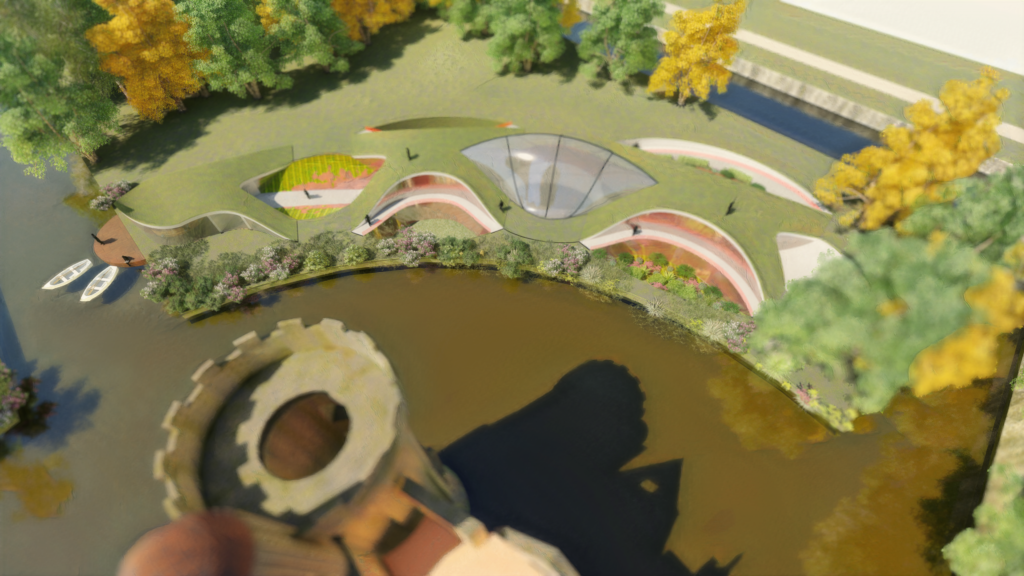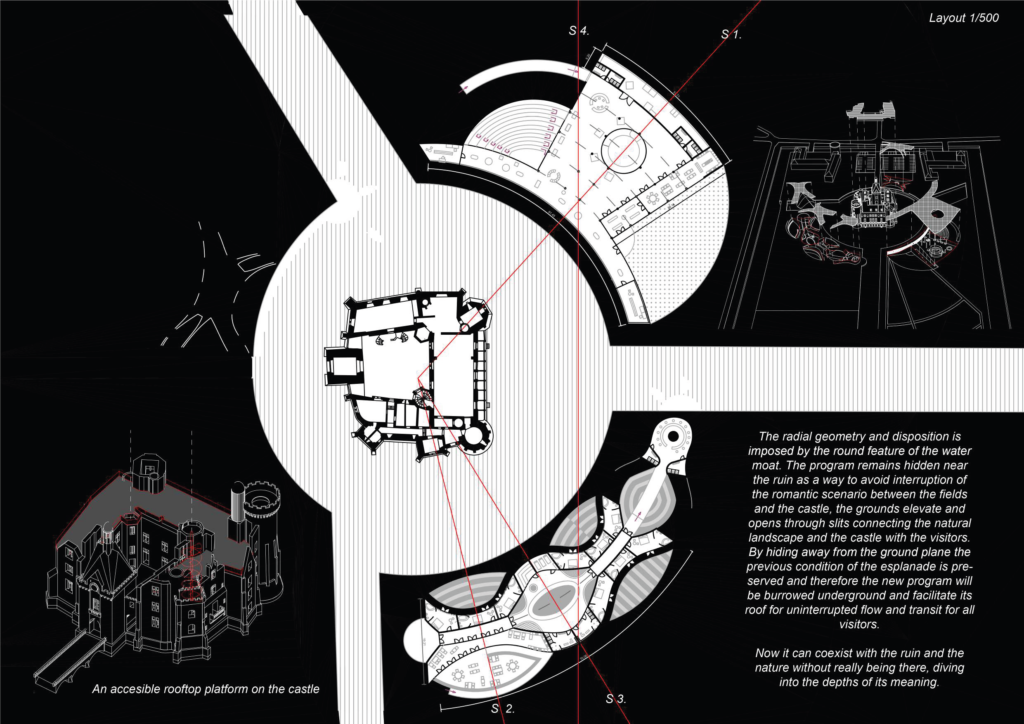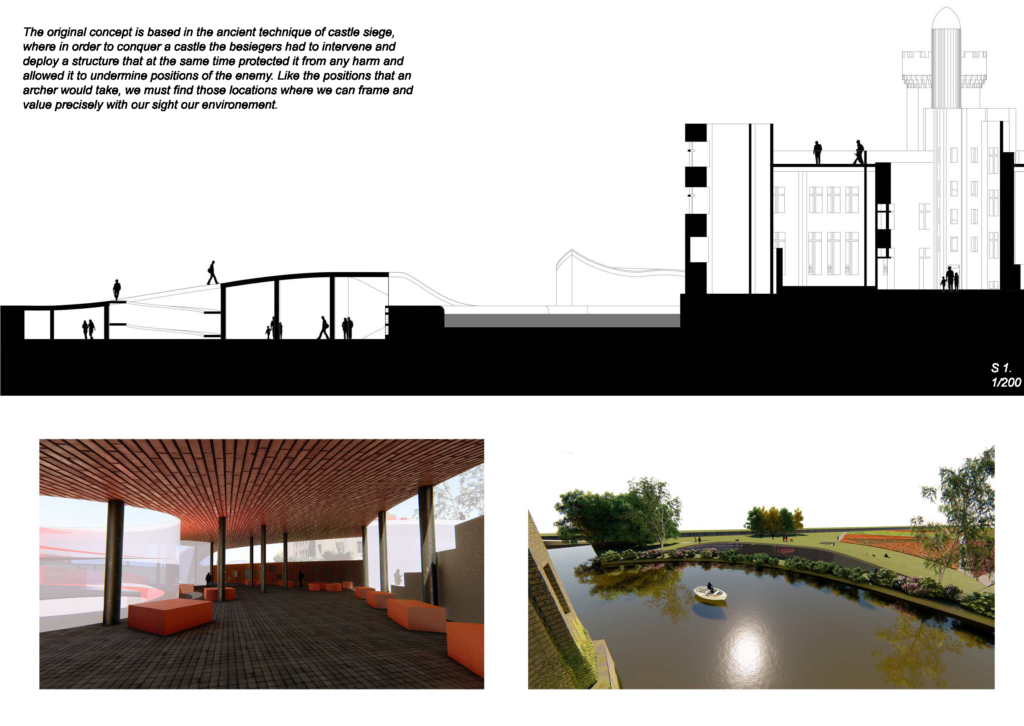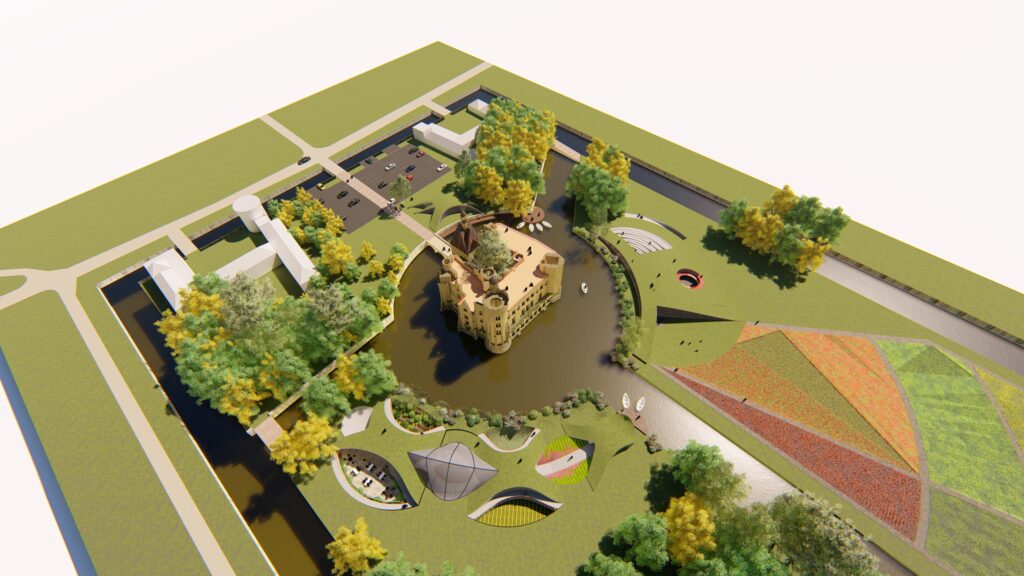Common ruins medieval museum and spa
“The feudal castle is invested with its true defensive character only when it is isolated, at a distance from great, wealthy, and populus cities, and when it overawes some little town, village, or hamlet. It then takes every advantage of the configuration of the country, and surrounds itself with precipices, moats, and watercourses.”
E.Viollet le Duc.
An essay on military architecture of the Middle Ages. The Feudal castle p.72 – 1854

Reviving the ruins in Mothe Chandeniers
This project reimagines the ruins of Mothe Chandeniers, a neo-Gothic castle lost in the French countryside, as a place of contemplation, memory, and experience. Rather than reconstructing the past, the intervention embraces the ruin’s decay, integrating a light, reversible architecture that enhances its sublime beauty. A museum and visitor center weave through the landscape, while elevated walkways and minimalist lodging units offer a new way to inhabit the site. The design respects the castle’s fragile state, framing it as a living relic where history, nature, and architecture converge.
Burrowed program

The radial geometry and disposition is imposed by the round feature of the water moat. The program remains hidden near the ruin as a way to avoid interruption of the romantic scenario between the fields and the castle, the grounds elevate and opens through slits connecting the natural landscape and the castle with the visitors.
By hiding away from the ground plane the previous condition of the esplanade is preserved and therefore the new program will be burrowed underground and facilitate its roof for uninterrupted flow and transit for all visitors.
Now it can coexist with the ruin and the nature without really being there, diving into the depths of its meaning.
The original concept is based in the ancient technique of castle siege, where in order to conquer a castle the besiegers had to intervene and deploy a structure that at the same time protected it from any harm and allowed it to undermine positions of the enemy. Like the positions that an archer would take, we must find those locations where we can frame and value precisely with our sight our environment.

A Museum
Burrowed underground and only visible through a major slit, it hides away from the ruin to offer the visitor a historic journey through the medieval stories of the “hundred years war” at the same time connecting the narration visually with the castle.
The access to the museum is meant to continously flow from the surface and offers a series of spaces impressed into the ground, this way it does not have to outwardly express anything, co-existing with the castle without really being there.

Underneath, outside and in transit
The intervention would then create three levels of spatial appreciation:
1) underneath buried and inside
2) elevated, on top and outside
3) in transit and in between
This way the project pretends to create an uninterrupted flow between inside and outside through continuous planes and ramps accesible to any visitor.
Every place where the sight fixates becomes an opportunity to enrich the environment or the project. I then increase the value of the location without harming it. This is a way to ensure a certain level of respect to the location and return with new opportunities.




